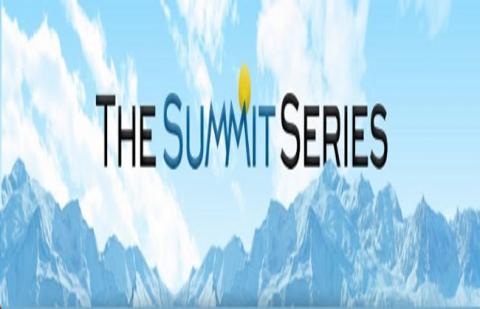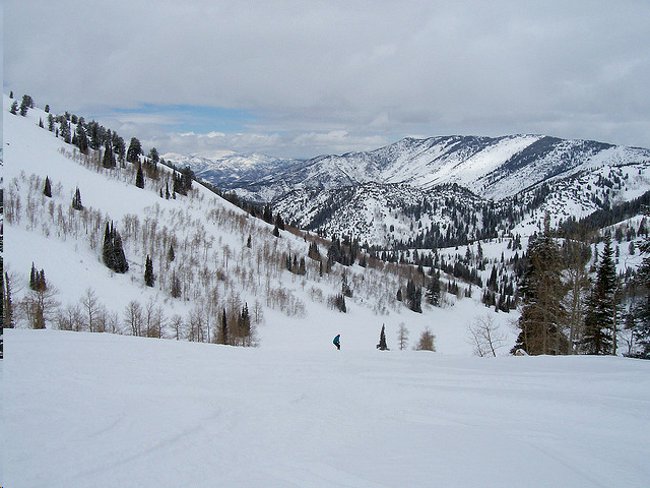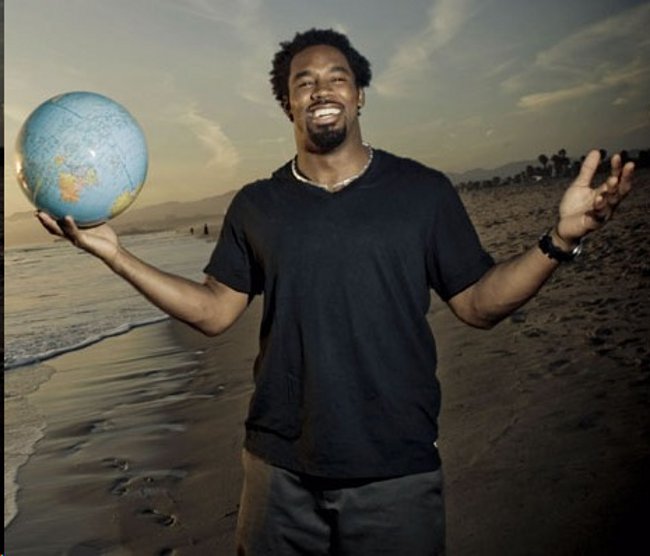The World According to the Summit Series

This past spring Summit Series co-founders Elliot Bisnow, Brett Leve, Jeff Rosenthal, and Jeremy Schwartz made headlines for buying Powder Mountain in Eden, Utah. The largest ski resort in the U.S. came with a price tag of $ 40 million dollars. What made the purchase especially newsworthy though was the fact that the company, then only five years old, was run by four entrepreneurs all under 30. To some, the thought of a young start-up buying a mountain in Utah might seem daring and even somewhat audacious, but this kind of thinking epitomizes the Summit Series. Its motto after all is, “make no small plans.”
From its nascent stages, the Summit Series was marked by risk-taking and thinking outside the box. The idea began in 2008 when Elliot Bisnow invited the nation’s top young entrepreneurs to a full paid weekend at Utah’s Alta Resort. At the time Bisnow was the head of a $2 million dollar start-up and kept on running into questions on how to run a start-up company. “ Instead of calling them and trying to get a meeting, I decided to convince them all to come to Utah with me,” Mr. Bisnow told the The New York Times in July of 2009, “I told them, ‘I will fly you for free and pay for the trip if you come.” Guests to the complimentary weekend included Blake Mycoskie, the founder of TOMS Shoes, Ricky Van Veen and Josh Abramson, the founders of CollegeHumor.com, and Ryan Allis, the founder of iContact. It’s from this unique proposal, that the Summit Series was formed.
The basic premise of the Summit Group is to bring people together in an environment that serves as a catalyst for change. This takes place in the form of an annual conference where artists, entrepreneurs, and activists come together to exchange ideas, ask questions, make connections, and have fun. The attendees come from a wide spectrum of fields: from small start-ups to nonprofits to the entertainment industry.
Summit Series’ mission statement explains, “Through an annual conference, we set the stage for these people to forge lifelong friendships, spawn new business ideas, tackle global issues, and, in turn, make our world a better place.” The invite-only event handpicks the young movers and shakers of today to attend the conference. The Summit team then makes sure to create an experience meant to inspire and stimulate change. Everything is thought out, from the food, to the activities, to the concerts performed. And while the word “conference” brings to mind outdated hotels, stale food, uncomfortable icebreakers, and insipid lectures, Summit shatters those stereotypes.

In the past, the series have been held in Mexico, the Bahamas, and even on a cruise ship. Guests partake in a wide range of activities from skydiving to white water rafting to discussing the implications of the Trayvon Martin verdict. Goers have gone shark tagging, been treated to all-night concerts, and attended lucid-dreaming meditations. The activities are combined with keynote lectures by the likes of Richard Branson, Ted Turner, and Bill Clinton. The results are real relationships and solutions. Once you’re part of “The Collective”, as Summit’s private network is called, you have access to unwavering support and connections. Those in The Collective promote each other’s book signings, premieres, and restaurant openings across the country. Chief executive of Zappos.com Tony Hsieh, Elle magazine founder Sunny Bates, Twitter’s Evan Williams, music mogul Russell Simmons, are all Collective members. This is Summit’s biggest allure and asset---the network. In July 31st, 2013, Forbes Steven Bertoni (who attended Summit Outside) wrote that, “Because of Summit Series, I can start an email to a billionaire with ‘Remember that time we went shark tagging in the Bahamas.’ That’s why people pony up $2,500 to stay in a tent—sure Summit Outside is a great party, but the good times are also a vehicle for lasting connections—ones that have led to new businesses, VC funding, partnerships and even a handful of marriages.”
Beyond flourishing relationships, solutions and businesses are also burgeoning from the conference. The series has raised over $1 million dollar in order to build a marine-reserve in the Bahamas, helped launch Spotify in North America, and raised more than $200,000 for the Clinton Foundation. They were even invited by the Obama administration to curate a series to discuss jobs and the economy. Just like the people who attend, the solutions that spring from the event are complex and creative ones. They all have somewhat of a Wild West mentality when it comes to coming up with solutions, business plans, and ideas.
The Summit Series taps into this spirit, which is why it is so successful both as a conference and as a company. As a result, it’s able to invest in the most innovative and creative ideas. It finds the perfect balance between creating a community that cares about creativity and change while still being able to produce a profit. Some of its revenue comes from the $ 2,500 ticket Summiteers pay in order to attend the conference. As well as from investments through its private fund, the Active Fund. (The Active Fund has invested in young start-ups like Uber and QWiki.) Ultimately, the real value and capital of The Summit Series comes from the community it’s creating, the people it brings together, and the ideas that result from it. Which leads to Eden, Utah.
In Eden, the company not only found its permanent home, but also has carte blanche to create an environment based on its values. In January 2, 2013 Summit’s Thayer Walker, told Steven Bertoni of Forbes, “what we’re looking to create is a place that houses all the ideals Summit embodies: entrepreneurship, altruism, art, science, culture, exploration of the physical, intellectual and spiritual components. We’re gathering the change-makers and thought leaders of our time in a spectacular, surreal setting that doesn’t exist anywhere else in the world.”

It is not your typical real estate project. Already, a members-lodge and an activities center have been built. The ski lifts are running and the menus are healthier. (More kale, less chips). There is an artistic residency program that provides an artist with a free luxurious house. And this past summer the team held its first conference, Summit Outside, accommodating over 800 people. Future projects for Eden include a 9,000 feet recording studio, an innovation lab, and conference spaces. And while there are plans for building hundreds of homes, a couple of boutique hotels, and a small village area, Summit will leave a large part of the 10,000 acres untouched. This has gained Summit the blessing from the local county, Ogden, Utah. The team has even pledged an $18.5 infrastructure bond to renovate the local roads and sewer systems.
All this is reflective of the community that the group is trying to build -- one that is conscious while groundbreaking. However, when all is said and done, the question remains at to how the 20-year-olds were able to raise the $40 million dollars. With lots rumored to be selling at $1 million dollars, becoming a member of Summit Eden is a hefty investment. Yet the Powder Mountain already counts the likes of author Timothy Ferriss, NFL player Dhani Jones, and PayPal founder Peter Thiel, as residents.
Part of the reason is because homeowners are getting more than a house. Becoming a Summit Eden member means a mountain at your disposal as well as concerts, conferences, and speakers. But more importantly, is that investors have year-round access to that priceless energy that is created by Summit. Much like how people attend the conference because of its “start-up-like” energy and environment, investors have chosen to take up residency in Eden. In January 2, 2013 Brett Leve told Forbes, “Owners want to meet the social entrepreneurs and nonprofit founders who have huge ideas… They want to meet the next generation of innovators, not just people who have already made it.” In a way, Eden forms a meeting point for the investors looking to invest into the next big thing, and the people who are coming up with enterprising ideas.
Author Bio:
Veronica Mendez is a contributing writer at Highbrow Magazine.






























































































































































































































































































































